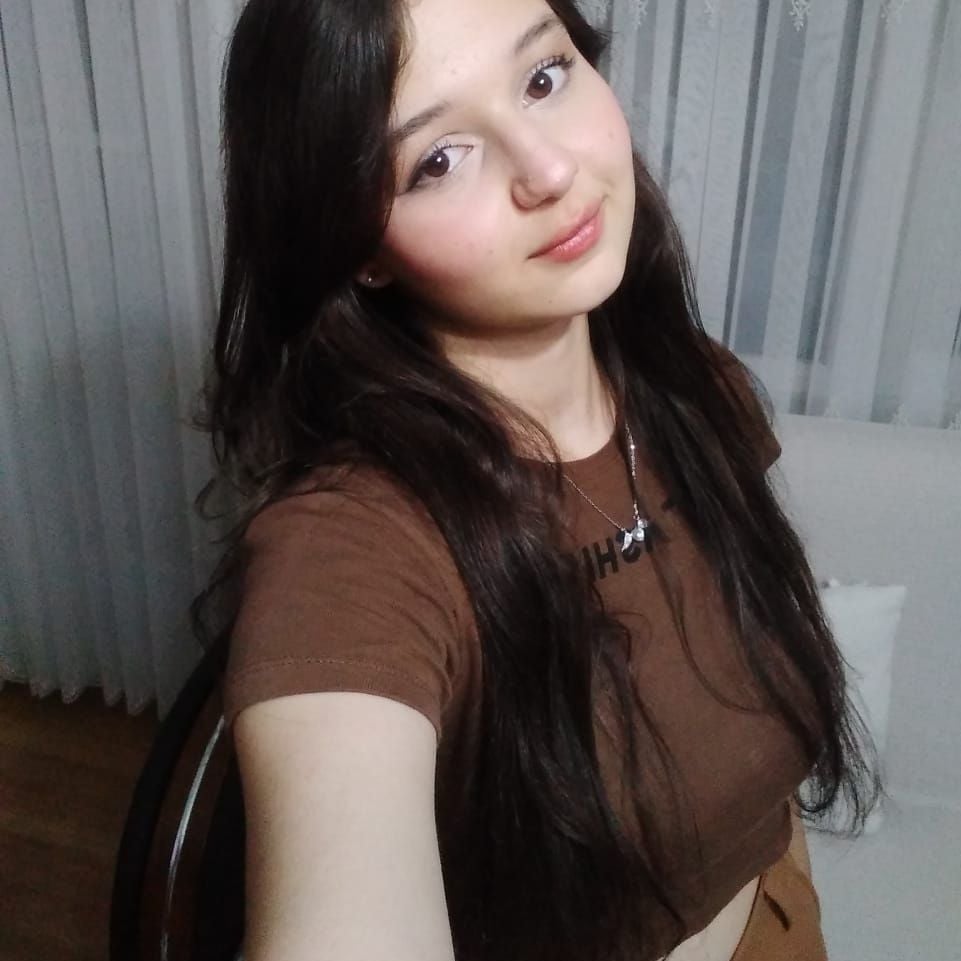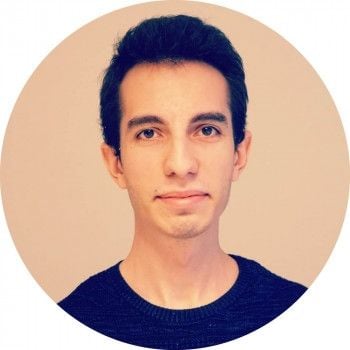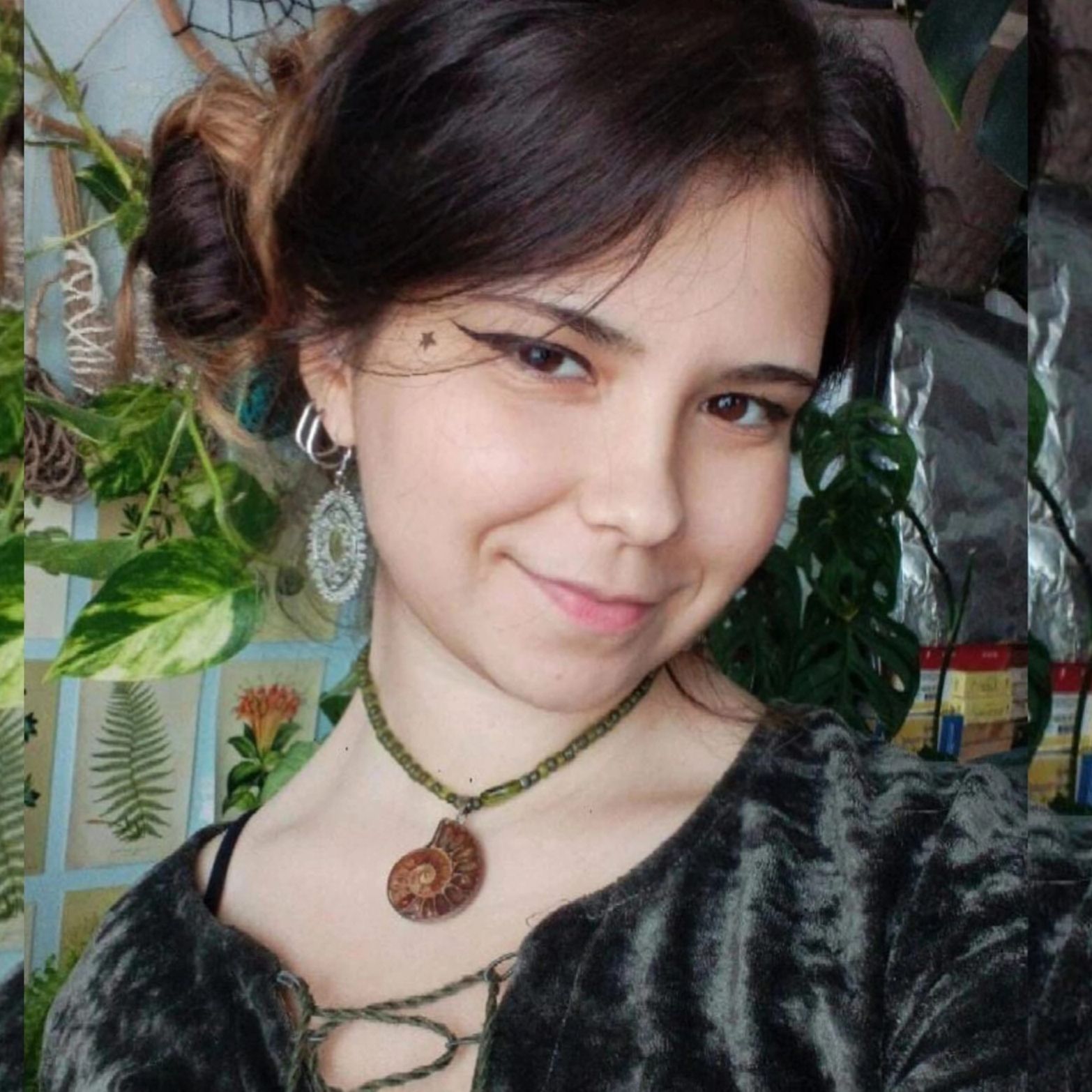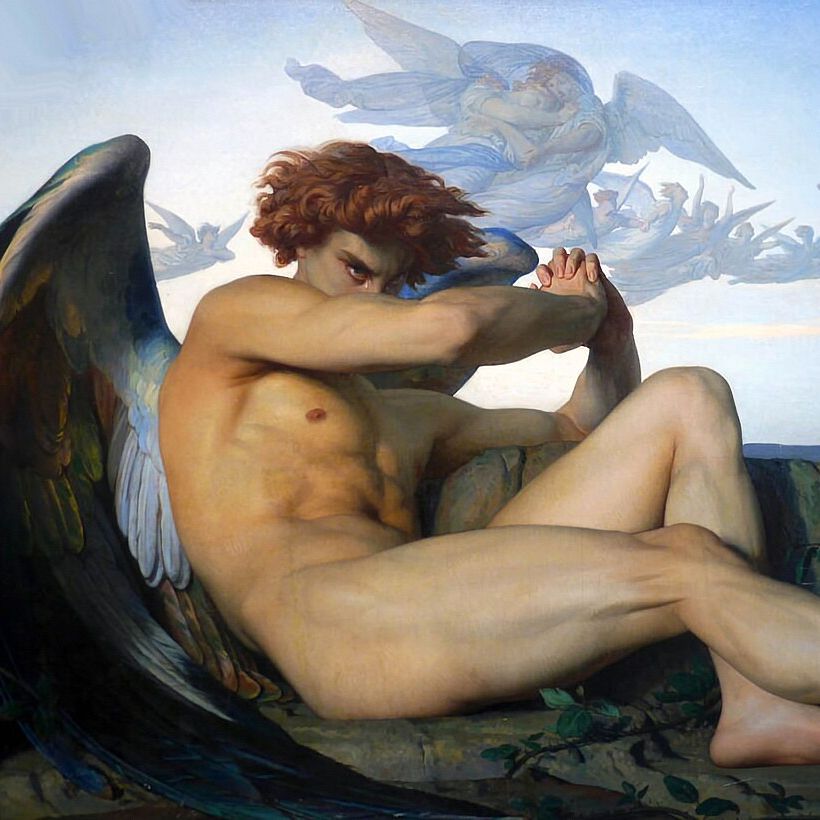Birthmarks: From the Kiss of Angels to Port Wine Stains...
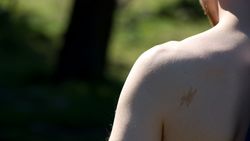 Flickr
Flickr
- Blog Yazısı
"Kisses from angels", "giraffe spots", "beauty marks", and "battle wounds" are all metaphors humans have used to explain why some of us have unique skin marks, or, as we now call them, birthmarks. Birthmarks come in all sorts of colors and arrangements. They can be flat, elevated, or go deep into the skin layers. There is a high probability that you were born with some type of birthmark or developed one shortly after birth. We even use them to identify missing children or even individuals who have committed crimes. Most birthmarks will not result in any serious medical conditions; however, there are some that have been linked to health issues and their appearances often raise concern in parents.
Types of Birthmarks
While each birthmark may be one of a kind, they will generally fall into one of two classes of birthmarks: pigmented and vascular. The pigmented birthmarks are the results of melanocytes clustering together in one location on the skin. If you remember from basic biology, melanocytes are what produce melanin that in turn determines the pigment or color of your skin; often these birthmarks will be brownish in color. Vascular birthmarks are the result of blood vessels growing abnormally in the different layers of the skin. These will often be red, purple, or pink in their markings.
Pigmented Birthmarks
One of the more common pigmented birthmarks include the Congenital Melanocytic Nevi. It looks like this:

These are the moles (nevi or singular: nevus) you are born with that are usually brown or black. These can come in all sorts of sizes, but compared to moles developed after birth these can be larger and often will have extra hair growth on the mole. On the larger end of congenital moles, the coverage of the skin can be quite significant and these moles will be in the "giant" class. Colloquially, they are called bathing trunk nevus as the moles coverage can be significant and dark. These particular ones can carry more health risks and can look something like this:
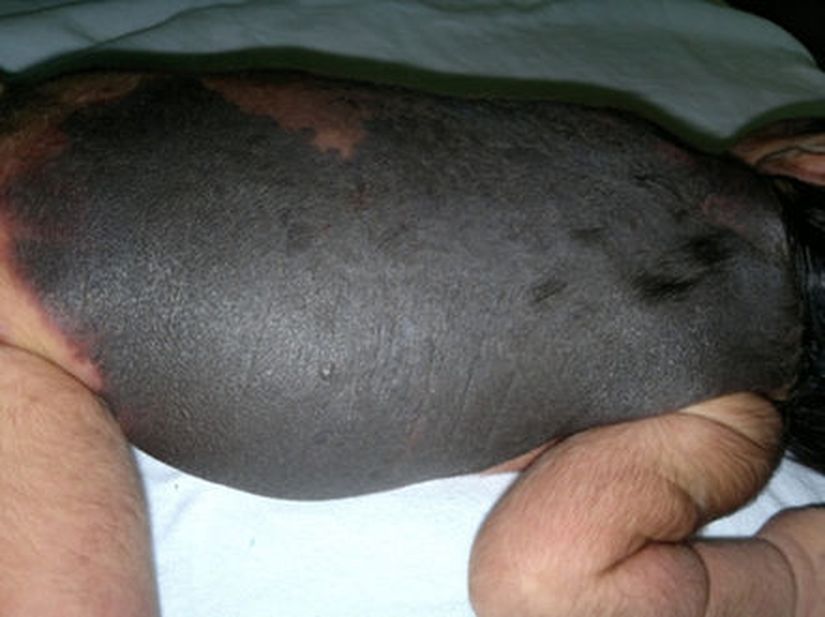
Another type is Dermal Melanosis, also sometimes called "Mongolian spots". They often present as bluish-gray or brown lesions on the back and buttocks areas. Since they may appear similar to bruises some may mistakenly believe they are marks arising from abuse; as an infant grows their appearance will often diminish in color and appearance.
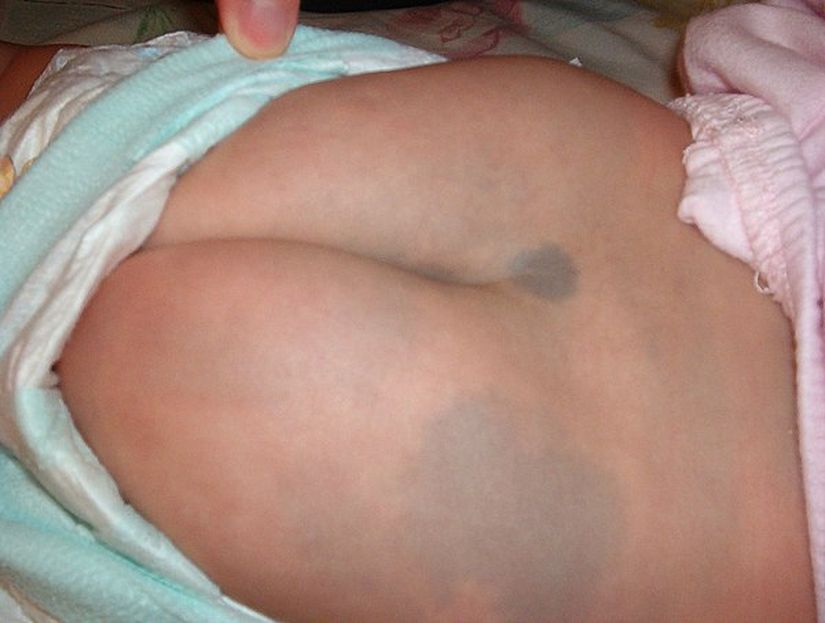
They are more common in African American, Native Americans, Asian, and Hispanic populations.
Another type of pigmented birthmarks includes the Café au lait (literally is French for "coffee with milk"), some people refer to them as "giraffe spots". These spots are usually permanent and may actually grow in size and increase in number over time.
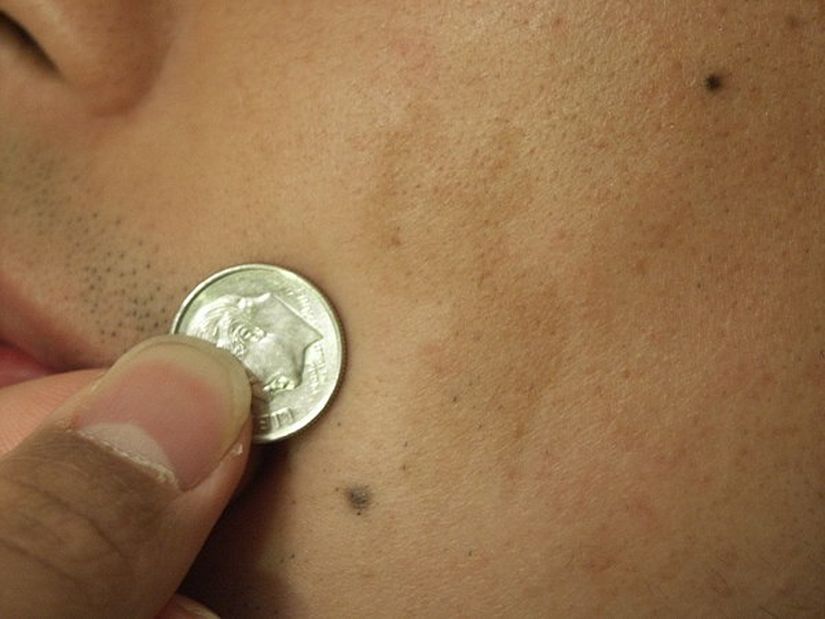
Vascular Birthmarks
Hemangiomas are a “strawberry” vascular birthmark. These will often go unnoticed at birth as they are usually flat and pale, but over time they grow and deepen to a reddish color, around 10% of infants will develop one in their first year.
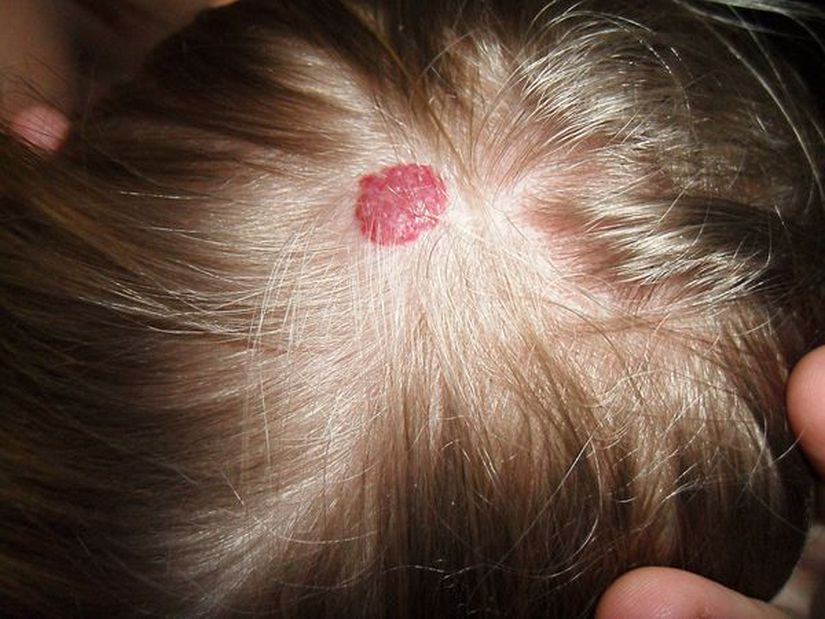
These birthmarks can be worrisome to parents, but statistics show that these spots will fade and shrink in 90% of cases by the time a child reaches 10 years of age, with only a slight mark being visible. Although, treatment may be needed if hemangiomas are located on the eyes, airways, sacrum, vital organs, and/or if there are a large quantity as they may be linked to neurological defects and/or other syndromes.
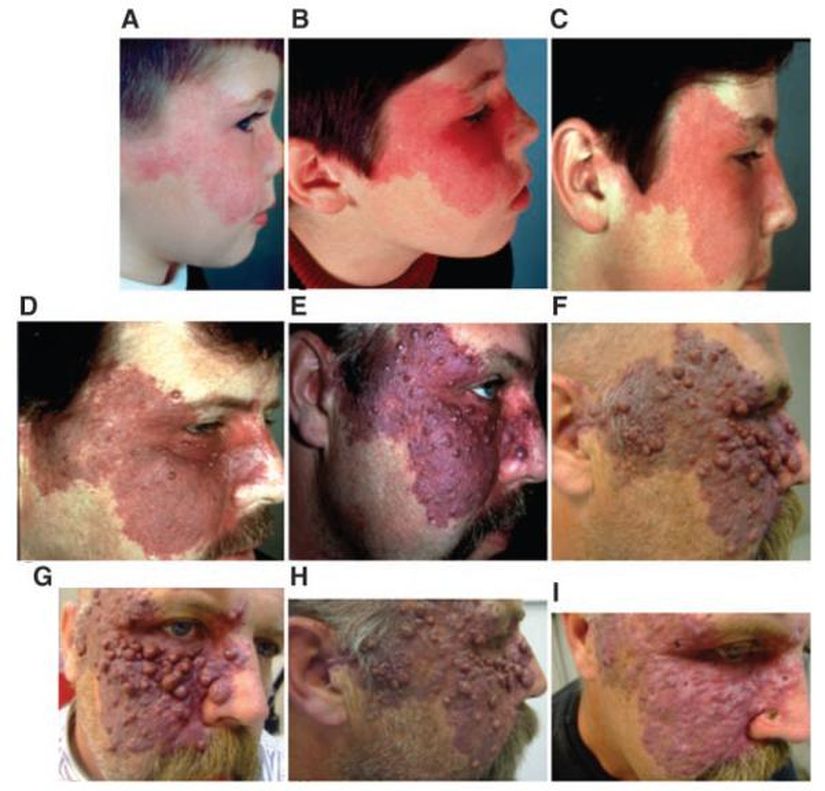
The Nevus Flammeus, port-wine stains are also sometimes called "firemark". Unlike a lot of birthmarks, these will not fade with age and will become redder or more purplish and as one ages, nodules can begin to grow within the mark. You can see the progression of this type of birthmark in the photo above. Normally, no treatment is required, unless they are located near the eyes or if one experiences discomfort in their location and progression with age. You can read in more detail at this link about the complications from these birthmarks, but depending on their location they can lead to disorders, such as ipsilateral glaucoma or Sturge-Weber syndrome. Approximately 76% of people diagnosed with this syndrome, will have a port wine stain located on the face. Additionally, 5-8% of all people with a port wine stain near the eyes will have this syndrome. These birthmarks are not very common.
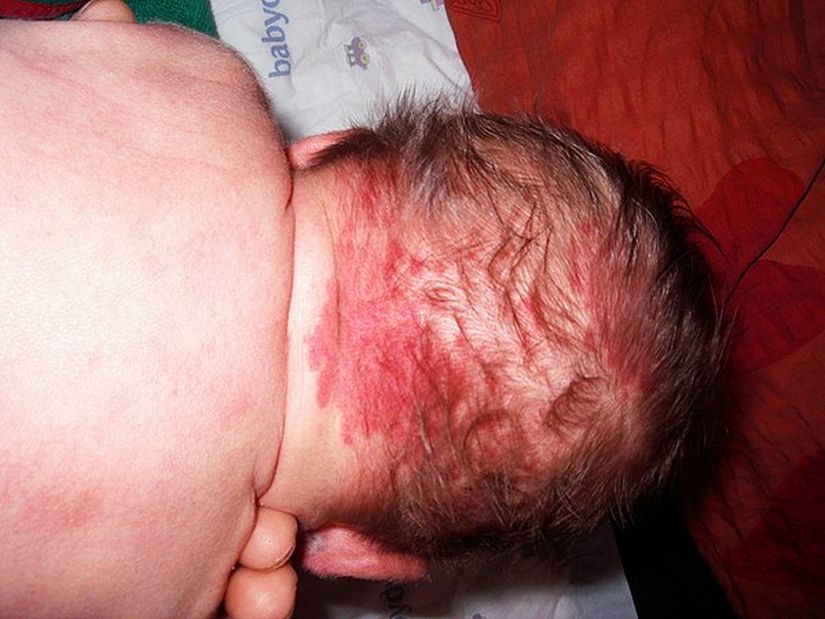
The Nevus Simplex or “angel kisses" or "stork bites” may be confused with port wine stains as they will look flat and salmon colored. However, they will often appear on the nape or back of the neck and be a little messy or unorganized in appearance like patchwork. Also, if you apply slight pressure, they will turn white temporarily; they are typically not harmful, are very common in infants (30-40% will have them) and will resolve in 2-3 years.
Aslında maddi destek istememizin nedeni çok basit: Çünkü Evrim Ağacı, bizim tek mesleğimiz, tek gelir kaynağımız. Birçoklarının aksine bizler, sosyal medyada gördüğünüz makale ve videolarımızı hobi olarak, mesleğimizden arta kalan zamanlarda yapmıyoruz. Dolayısıyla bu işi sürdürebilmek için gelir elde etmemiz gerekiyor.
Bunda elbette ki hiçbir sakınca yok; kimin, ne şartlar altında yayın yapmayı seçtiği büyük oranda bir tercih meselesi. Ne var ki biz, eğer ana mesleklerimizi icra edecek olursak (yani kendi mesleğimiz doğrultusunda bir iş sahibi olursak) Evrim Ağacı'na zaman ayıramayacağımızı, ayakta tutamayacağımızı biliyoruz. Çünkü az sonra detaylarını vereceğimiz üzere, Evrim Ağacı sosyal medyada denk geldiğiniz makale ve videolardan çok daha büyük, kapsamlı ve aşırı zaman alan bir bilim platformu projesi. Bu nedenle bizler, meslek olarak Evrim Ağacı'nı seçtik.
Eğer hem Evrim Ağacı'ndan hayatımızı idame ettirecek, mesleklerimizi bırakmayı en azından kısmen meşrulaştıracak ve mantıklı kılacak kadar bir gelir kaynağı elde edemezsek, mecburen Evrim Ağacı'nı bırakıp, kendi mesleklerimize döneceğiz. Ama bunu istemiyoruz ve bu nedenle didiniyoruz.
Third Nipple Birthmarks
Many people do not know that birthmarks include what the medical world calls the "third nipple" or Supernumerary Nipples (four or more nipples on the body)! During an early stage of embryogenesis (the time frame when a fetus is forming in the womb) we all will have mammary glands or milk glands that form along the mammary ridge. You can see this ridge, also called a crest, in the figure below.
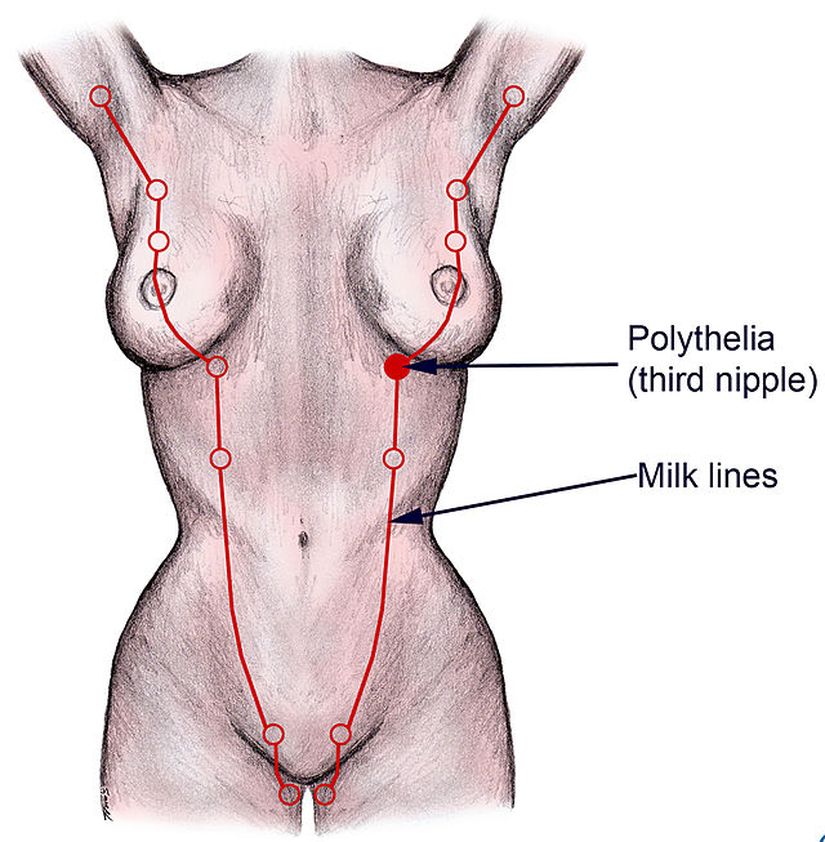
Typically, all these extra glands will be reabsorbed; however, sometimes this does not happen and extra nipple(s) will form in addition to the two that men and women have. If extra nipples are formed, they will typically be along these embryo milk lines, although they can deviate from these locations.
This is all done before hormones decide our biological sex. In case you were wondering, this is the reason males and females both have nipples: All human embryos develop as if the person will become a female; but towards the sixth week of the embryogenesis, testosterone starts being produced, allowing the individual to develop male characteristics. However, at this stage, the nipple tissue will have already been formed, and biological males will develop nipples too.

These nipples may include both the areola (the small circular area, in particular the ring of pigmented skin surrounding a nipple) and the nipple, and may be mistaken for a pigmented birthmark (mole). They are more common in men and occur in about 5% of the population. They are often harmless and smaller than regular nipples. Some women may even experience lactation in a third nipple during lactation or breast feeding.
Ending Thoughts
This is only a brief introduction into the the world of birthmarks. As you have read, the majority of birthmarks are not hazardous to health, although, some may feel discomfort depending on their location and appearance. Dermatologists have tools and treatments to help manage birthmarks that are bothersome and monitor and treat for complications. You can always ask your medical profession if you have concerns about a birthmark or experience any abnormal growth or changes to an existing birthmark.
- 1
- 0
- 0
- 0
- 0
- 0
- 0
- 0
- 0
- 0
- 0
- 0
- V. Ngan. Capillary Vascular Malformation. (1 Ocak 2014). Alındığı Tarih: 26 Kasım 2018. Alındığı Yer: Dermnet NZ | Arşiv Bağlantısı
- Nevus Simplex. Nevus Simplex. (26 Kasım 2018). Alındığı Tarih: 26 Kasım 2018. Alındığı Yer: Ann & Robert H. Lurie Children's Hospital of Chicago | Arşiv Bağlantısı
- M. McLaugh. (2018). Newborn Skin: Part Ii. Birthmarks. American Family Physician, sf: 56-60. | Arşiv Bağlantısı
- B. Cadman. What You Should Know About Third Nipples. (24 Ocak 2018). Alındığı Tarih: 26 Kasım 2018. Alındığı Yer: Medical News Today | Arşiv Bağlantısı
- American Academy of Dermatology. Different Kinds Of Birthmarks. (26 Kasım 2018). Alındığı Tarih: 26 Kasım 2018. Alındığı Yer: American Academy of Dermatology | Arşiv Bağlantısı
- K. Minkis. (2018). Port Wine Stain Progression: A Potential Consequence Of Delayed And Inadequate Treatment?. Lasers in Surgery and Medicine, sf: 423-426. | Arşiv Bağlantısı
Evrim Ağacı'na her ay sadece 1 kahve ısmarlayarak destek olmak ister misiniz?
Şu iki siteden birini kullanarak şimdi destek olabilirsiniz:
kreosus.com/evrimagaci | patreon.com/evrimagaci
Çıktı Bilgisi: Bu sayfa, Evrim Ağacı yazdırma aracı kullanılarak 09/12/2025 06:34:55 tarihinde oluşturulmuştur. Evrim Ağacı'ndaki içeriklerin tamamı, birden fazla editör tarafından, durmaksızın elden geçirilmekte, güncellenmekte ve geliştirilmektedir. Dolayısıyla bu çıktının alındığı tarihten sonra yapılan güncellemeleri görmek ve bu içeriğin en güncel halini okumak için lütfen şu adrese gidiniz: https://evrimagaci.org/s/7465
İçerik Kullanım İzinleri: Evrim Ağacı'ndaki yazılı içerikler orijinallerine hiçbir şekilde dokunulmadığı müddetçe izin alınmaksızın paylaşılabilir, kopyalanabilir, yapıştırılabilir, çoğaltılabilir, basılabilir, dağıtılabilir, yayılabilir, alıntılanabilir. Ancak bu içeriklerin hiçbiri izin alınmaksızın değiştirilemez ve değiştirilmiş halleri Evrim Ağacı'na aitmiş gibi sunulamaz. Benzer şekilde, içeriklerin hiçbiri, söz konusu içeriğin açıkça belirtilmiş yazarlarından ve Evrim Ağacı'ndan başkasına aitmiş gibi sunulamaz. Bu sayfa izin alınmaksızın düzenlenemez, Evrim Ağacı logosu, yazar/editör bilgileri ve içeriğin diğer kısımları izin alınmaksızın değiştirilemez veya kaldırılamaz.



